Trump calls for death penalty for migrants who kill US citizens, police
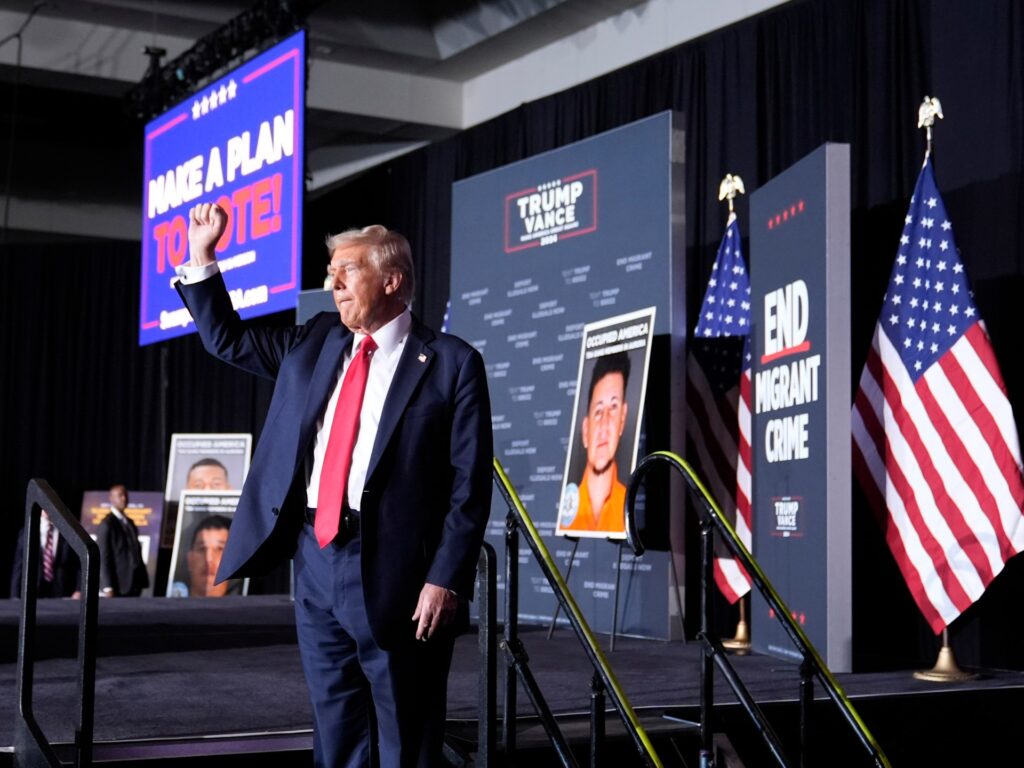
Republican presidential candidate Donald Trump has called for the death penalty for migrants who kill United States citizens or members of law enforcement, as part of an incendiary rally in Aurora, Colorado. In his Friday night speech, Trump, a former president, repeated false and misleading claims about immigrants in the US, leaning into nativist sentiment as he campaigns for a second term. “Now America is known all throughout the world as occupied America,” he told the rally, citing a supposed “invasion” of migrants. Trump also laid out a stark vision for his first days in office, if re-elected, with policy proposals hinged on mass deportation. “To everyone here in Colorado and all across our nation, I make this pledge and vow to you: November 5, 2024, will be liberation day in America,” he said, with a reference to election day. Trump has repeatedly sought to demonise migrants in the run-up to the vote, pointing to an increase in southern border crossings under the administration of President Joe Biden, a Democrat. But critics have drawn parallels between Trump’s inflammatory rhetoric and the language used historically by white supremacist movements. A town in the national spotlight Trump’s campaign stop in Aurora was poised to drum up fears of immigration: He has long used the city as an example of the alleged lawlessness of migrants. The city has been besieged by misinformation in recent months, as rumours swirled that the Venezuelan gang Tren de Aragua had wrested control over parts of the city. Those claims were false. Media reports indicated they arose after a property management company — faced with accusations of decrepit conditions in its apartment buildings — blamed a gang presence for the lack of repairs. But Trump and his allies have nevertheless continued to repeat the false rumours, despite pushback from local officials. Ahead of Friday’s rally, Aurora Mayor Mike Coffman, a Republican, said in a statement on Facebook, “Concerns about Venezuelan gang activity have been grossly exaggerated.” Only a handful of incidents related to the Tren de Aragua gang have been reported in the city of 400,000, he added. “Former President Trump’s visit to Aurora is an opportunity to show him and the nation that Aurora is a considerably safe city — not a city overrun by Venezuelan gangs,” Coffman said. Furthermore, several studies have shown that undocumented migrants are far less likely to be arrested for felony and violent crimes than US-born citizens. Aurora Police Department statistics have also shown that major crimes in the city have dropped since last year. Preview of a second term Regardless, Trump repeated his false accusations on Friday, promising to “rescue” Aurora and other cities from an “invasion” of migrants. “We will begin the largest deportation operation in the history of the United States,” Trump said. “We will close the border. We will stop the invasion of illegals into our country. We will defend our territory. We will not be conquered.” The Republican candidate also invoked racist and xenophobic stereotypes, including that migrants were likely to carry illness. “They’re very sick, very sick. They’re coming into our country. They’re very, very sick with highly contagious disease, and they’re let into our country to infect our country,” Trump said. His speech included references to what he would do in his first days back in the White House if he wins November’s election. “I’m announcing today that, upon taking office, we will have an Operation Aurora at the federal level to expedite the removals of these savage gangs,” Trump said. Part of the plan, he explained, was to invoke the Alien Enemies Act of 1798, an antiquated law that allows the federal government to round up and deport foreigners belonging to a country with which America is at war. Trump then added he would seek harsh penalties for migrants involved in crimes. “I’m hereby calling for the death penalty for any migrant that kills an American citizen or a law enforcement officer,” he said, to cheers from the crowd. Race enters final phase The Aurora rally comes as Trump and his Democratic rival, Vice President Kamala Harris, enter the final stretch of the election season, with just 23 days until the vote. Trump has long promoted anti-immigrant sentiment, even before his first successful run for office in 2016. In the early and mid-2010s, he spread conspiracy theories about former President Barack Obama’s citizenship and whether the Democratic leader was secretly Muslim. When he announced his bid for the presidency in 2016, Trump campaigned in part on depictions of Mexican immigrants as “rapists”. That rhetoric continued throughout his term in office, which ended in 2021. Experts have warned that dehumanising language about migrants and foreigners can increase the likelihood of violence. But polls consistently show immigration as one of the top election issues in the US, making it fertile ground for politicians. Trump and his running mate, Senator JD Vance, have focused intensely on the issue as the November election approaches. They have sought to paint Harris as a “border czar” — a false designation — who left the US with “open borders” vulnerable to mass immigration. While southern border crossings did spike under Biden — reaching 250,000 crossings in the month of December 2023 — they have since returned to numbers similar to those seen during Trump’s term. Speaking to Latino voters during a Univision town hall on Thursday, Harris defended the Biden administration’s policy on immigration. She pointed to a recent bipartisan bill that would have toughened restrictions on the border. The bill was reportedly scuttled by Republicans loyal to Trump, reportedly at the former president’s behest. Still, critics say Harris has lurched further to the right on immigration issues. During a visit to Arizona last month, she promised to impose tougher restrictions on asylum than Biden, who has already taken action to limit asylum claims. Trump and Vance, meanwhile, have zeroed in on communities in cities like Aurora and Springfield, Ohio, to advance apocalyptic claims about immigration. Last month, for instance, the
Caught in India-China clashes, Ladakh’s nomadic herders fear for future
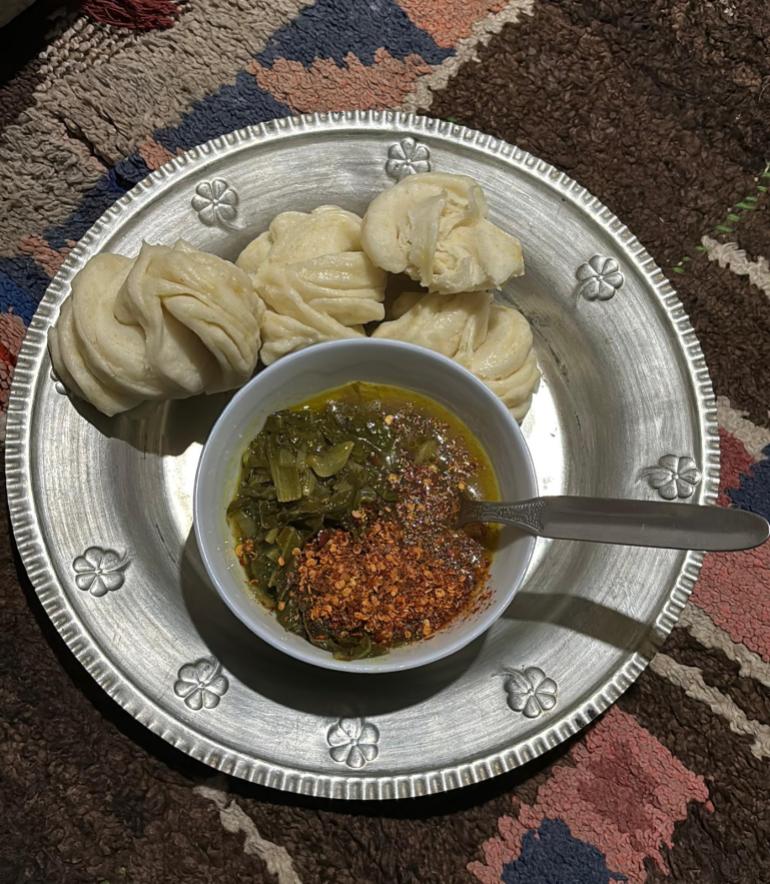
Chushul, Ladakh, India – The bubbling sound of water boiling on the stove and the aroma of spinach dal fill the air in Tashi Angmo’s kitchen as she rolls dough to make a type of Tibetan bread. “This is a dish which we call timok in Ladakh and tingmo across the border in Tibet,” she says as she prepares the apparatus to steam the dough she has rolled into balls resembling dumplings. “It’s a delicious meal after a hard day’s work.” Angmo, 51, lives in Chushul, a village which sits at an altitude of 4,350 metres (14,270 feet) in India’s Ladakh, one of the highest regions in the world, known for its pristine rivers and lakes, high valleys and mountains and clear skies. Chushul also lies about 8 kilometres (5 miles) from India’s Line of Actual Control with China, the disputed, de facto border between the two countries. A type of Tibetan bread called timok in Ladakh and tingmo across the border in Tibet [Priyanka Shankar/Al Jazeera] “I was around 11 years old when I realised that my family and I lived very close to the Chinese border. Back then, we used to be a family of shepherds, and I often went near the border with my father, to take our sheep herding,” Angmo says. She now works as a labourer doing a variety of tasks from cleaning roads to helping with construction and cooking meals for other workers, for the Border Roads Organisation – the Indian Defence Ministry’s initiative to maintain roads in the subcontinent’s border areas. Tashi Angomo lives in Chushul, a village which borders China in India’s Ladakh [Priyanka Shankar/Al Jazeera] “We even used to trade apricots and barley which grew in our village with the Chinese shepherds. In return, we brought back chicken, some Chinese cookies and also teapots!” she exclaims and points to the teapots which she still keeps in her kitchen cabinet. Even the Sino-India war in 1962 over border and territorial disputes between the neighbours, after New Delhi had given shelter to the Dalai Lama and other Tibetan refugees, did not undo that delicate balance. What did was a deadly clash in the summer of 2020. As the world was absorbed in its battle against the COVID-19 pandemic, Indian and Chinese soldiers fought with sticks, stones and their bare hands along the Line of Actual Control in Ladakh’s Galwan valley. Each side claimed that the other’s troops had crossed into their territory. The close combat fighting led to the death of 20 Indian soldiers and at least four Chinese soldiers. These were the first deaths along the border in decades. The Indo-China border seen from Chushul, which lies about 8 kilometres (5 miles) from India’s Line of Actual Control with China [Priyanka Shankar/Al Jazeera] Since then, both sides have stepped up border patrols and moved troops to the region, and their troops have occasionally engaged in standoffs. In many Ladakhi villages bordering China, grazing and farming close to the frontier has now been restricted by the Indian military. Boating in the pristine Pangong Tso lake, parts of which are claimed by both New Delhi and Beijing, has also been restricted to only military boats. “We can’t go near the border any more or trade with Chinese people. Shepherds – most of whom are nomads – have also lost land close to the border since the Indian military oversees the area,” she says. The land has largely been swallowed by military buffer zones on both sides of the border, with rich pasture land for 2km in either direction now a no-go zone for the herders. Young nomads and farmers moving away Donning a pink scarf and a grey sweater, Kunjan Dolma, who is in her late 30s, belongs to the Changpa community – seminomadic Tibetan people who live in the Changtang plateau in eastern Ladakh. She lives in Chushul during the winter months and is nomadic throughout the rest of the year. Dolma tells Al Jazeera that the land near the Chinese border is an important winter pasture for their animals. “But if we take our sheep and goats near the Chinese border, the military stops us and advises us to find grazing lands elsewhere. We have lost important pastures in recent years, but we have begun adjusting to the restrictions,” she says as she milks her sheep in an open-air shed built with stones and surrounded by the low-lying mountains. “In a way, the military restrictions also make sense. They protect us from the Chinese soldiers who I fear might take away our sheep in case we go very close to the border.” Dolma lives with her husband and teenage daughter and the family has about 200 sheep whose wool they sell to make pashmina shawls. It is an important source of income, she explains. She spends days in the mountains to ensure their yaks and sheep have access to the best grazing lands during the warmer months of the year. The Changpa community retreats to the villages in the lower-lying hills of Ladakh during winter. She earns her living selling pashmina wool, and yak meat and milk. Kunjan Dolma, who belongs to the Changpa community – seminomadic Tibetan people who live in the Changthang valley in eastern Ladakh – tends to her sheep with her family [Priyanka Shankar/Al Jazeera] But Dolma’s daughter, like many young people from the nomadic families of the Changtang plateau, has begun turning to other professions to earn a living. Dolma added that military restrictions on grazing land have also increased the momentum of young nomads turning away from this traditional way of life. Sipping on a cup of warm water before she heads to the mountains to make her cattle graze, Dolma reminisces about her younger days when border tensions did not exist in their lands. “I’ve spent many joyful days in these mountains with my sheep and when there were no border restrictions, it was very easy for us to take our cattle across pastures.
US Justice Department sues Virginia for purging voters before election
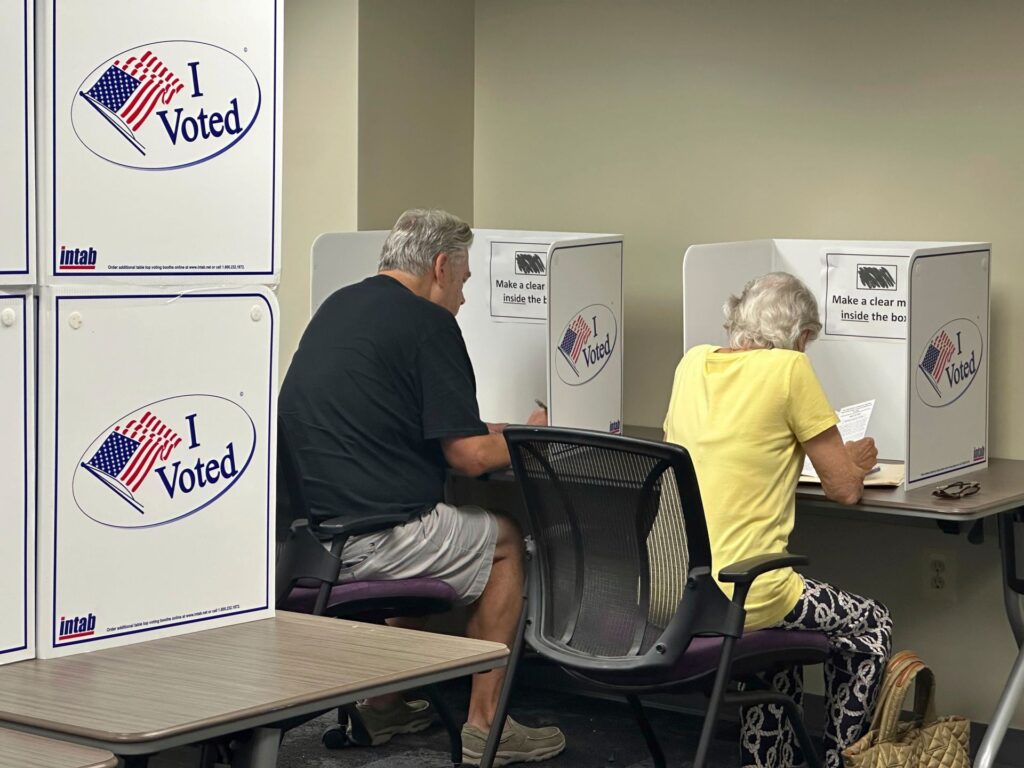
The move comes as Republicans increasingly emphasise the chance of noncitizen voting, despite little evidence of any significant risk posed. The United States Justice Department has sued Virginia for removing voters from registration rolls too close to the presidential election on November 5. The lawsuit, filed on Friday, comes in response to an executive order issued in August by Virginia’s Republican Governor Glenn Youngkin. It initiated the removal of individuals from voter registration rolls if officials are “unable to verify that they are citizens” through the state’s Department of Motor Vehicles. But the Justice Department says the executive order was issued with too little time before election day, violating a 90-day “quiet period” outlined in The National Voter Registration Act. That period requires official systematic removals at least three months ahead of a federal vote. “Congress adopted the National Voter Registration Act’s quiet period restriction to prevent error-prone, eleventh-hour efforts that all too often disenfranchise qualified voters,” Assistant US Attorney General Kristen Clarke said in a statement. “The right to vote is the cornerstone of our democracy and the Justice Department will continue to ensure that the rights of qualified voters are protected.” Youngkin had issued his order on August 7, which marked 90 days until the election. In a statement on Friday, the governor argued the executive order fell within the law. “Virginians – and Americans – will see this for exactly what it is: a desperate attempt to attack the legitimacy of the elections in the Commonwealth, the very crucible of American Democracy,” Youngkin said. He pledged state authorities “will defend these common-sense steps, that we are legally required to take, with every resource available to us”. “Virginia’s election will be secure and fair, and I will not stand idly by as this politically motivated action tries to interfere in our elections, period,” Youngkin said. Republicans and allies of former President Donald Trump – the current Republican candidate for the presidency – have increasingly pushed unfounded claims of possible election malfeasance ahead of this year’s vote. Those claims echo falsehoods spread about the 2020 election, which Trump has continued to falsely say was “stolen” through fraud. Some Republican officials have also advanced baseless claims that noncitizens are voting in large enough numbers to affect the outcome. In the US, only citizens can vote. Most voter administration is determined by state officials and legislatures, with only broad parameters from the federal government. Nearly all US states require some form of voter registration to cast a ballot, although many allow the registration to be done on election day. Ahead of the 2024 elections, several states – including Texas, Tennessee, Ohio and Alabama – have passed measures requiring higher burdens of proof to show a voter’s citizenship. Democracy monitors said those efforts may disenfranchise US citizens who are otherwise eligible to vote. The Brennan Center for Justice – a non-partisan policy organisation – found that noncitizen voting in the US is exceedingly rare. There is no evidence it had any bearing on recent elections. In 2017, the centre released a study looking at 23.5 million votes cast in the 2016 general election. Only 30 votes were flagged for suspected noncitizen voting. Data was not available on how many of those votes proved to have been cast by noncitizens. Adblock test (Why?)
RG Kar case: West Bengal government remains silent as condition of fasting medics deteriorates
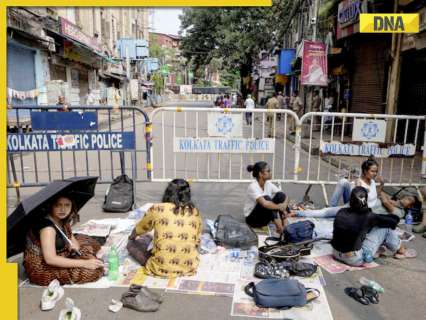
The ongoing agitation has also led the Federation of All India Medical Association (FAIMA) to warn that it would declare a nationwide “complete shutdown of medical services” if any “any harm befalls brave junior doctors”.
Mysuru-Darbhanga Bagmati Express collision: Southern Railway says train ‘mistakenly’ entered loop where…
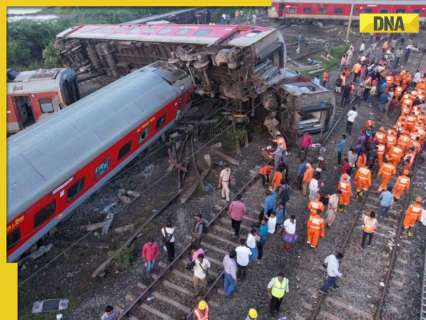
The Train No.12578 Mysuru – Darbhanga Bagmati Express met with an accident around 8.30 pm on October 11 and the passengers were transported by buses to Ponneri and then to Chennai Central by two EMU specials, the railway said.
IMD Weather update: Heavy rainfall predicted in THESE states for next…, check detailed forecast here
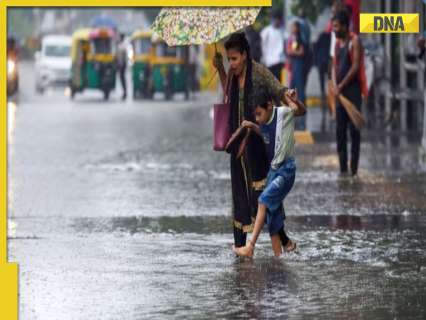
The Indian Meteorological Department (IMD) has issued a warning for heavy rainfall in 10 states, starting from October 12 to 16.
Manu Bhaker attends her alma mater’s award ceremony in Delhi University, says ‘people think girls from LSR are…’

Olympians Manu Bhaker, Maheshwari Chauhan, and Rhythm Sangwan, all former students of the prestigious Lady Shri Ram College, Delhi University were recently honoured by the college.
5th Circuit Court orders federal judge removed from Texas foster care lawsuit
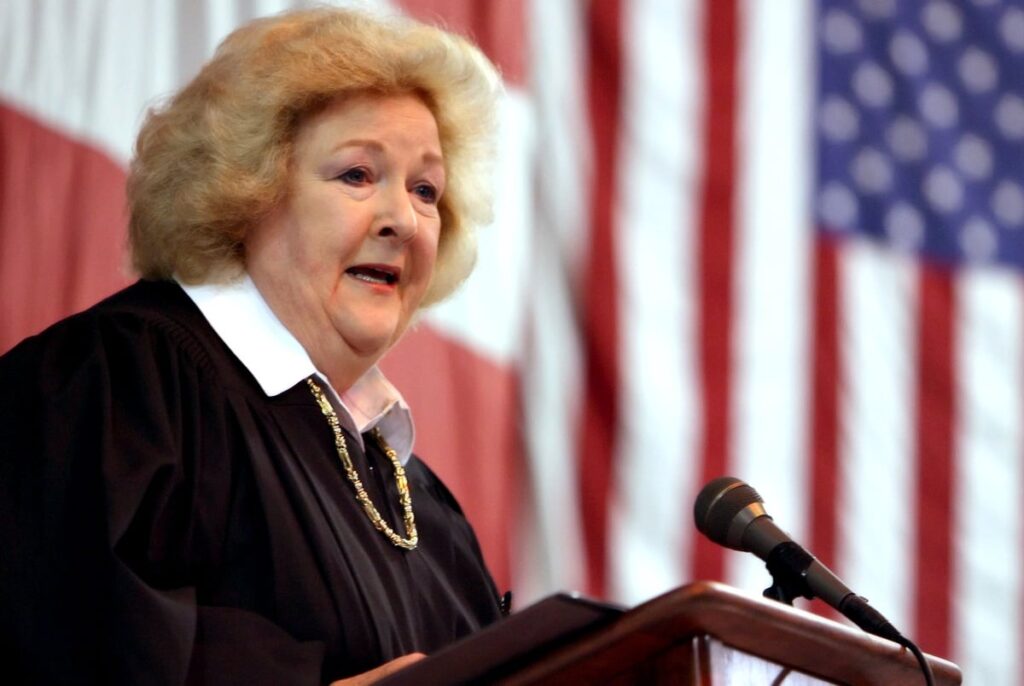
U.S. District Judge Janis Jack, the state’s de facto foster care czar, has been overseeing the case since 2011.
Judge strikes down strict voter assistance rules in Texas’ 2021 rewrite of election laws
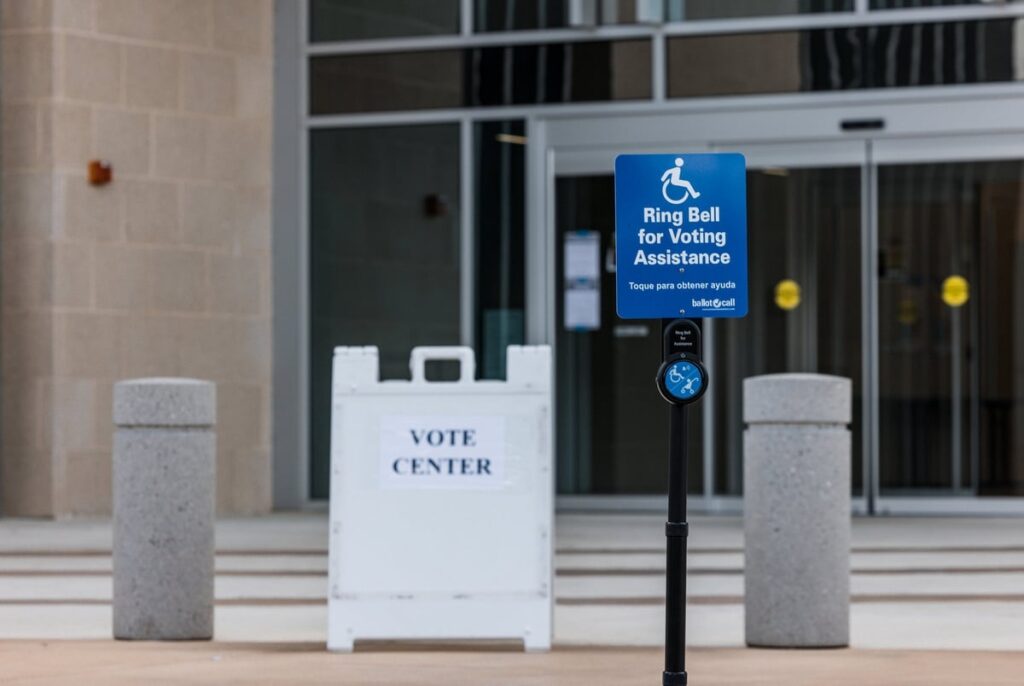
Texas Republicans passed the legislation known as Senate Bill 1 after former President Donald Trump lost the 2020 election and spread lies about it.
Trump campaign seeks increased security as election draws near, including military aircraft amid Iran threats
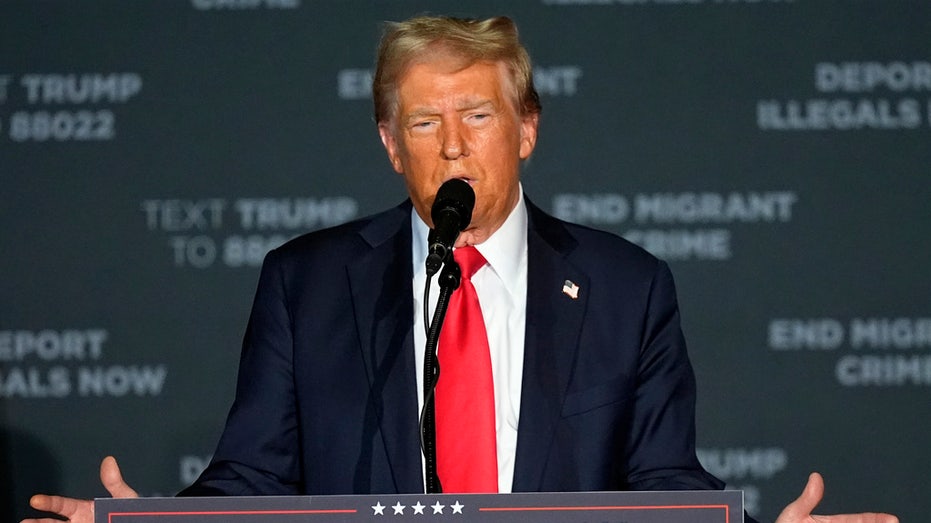
The campaign for former President Trump has asked the White House for enhanced Secret Service security amid safety concerns in the final stages of the election, citing threats from Iran, Fox News has learned. On Friday, President Biden was asked about the request by the GOP nominee for enhanced security protocols. “As long as you don’t ask for F-15s. Well, look, I’ve told them to give him every, every single thing he needs as if he were a sitting president,” Biden said. “If it’s within that category. That’s fine.” The Trump campaign cited serious threats from Iran for extra protection. It asked for temporary airspace restrictions on the campaign trail, motorcade drivers with tactical experience and vehicles like the “Beast”, the bullet-proof vehicle used by for Biden. TRUMP BRIEFED ON ‘REAL AND SPECIFIC THREATS’ FROM IRAN TO ASSASSINATE HIM, CAMPAIGN SAYS U.S. Rep. Mike Waltz, R-Fla., wrote a letter to Defense Secretary Lloyd Austin, Homeland Security Secretary Alejandro Mayorkas, National Security Advisor Jake Sullivan, and Acting U.S. Secret Service Director Rowe warning that Iran was actively trying to kill Trump. Waltz asked that various aircraft, including military aircraft with defense capabilities, be provided for Trump in case of a missile attack, as well as a C-17 or C-40. The requests came following two failed assassination attempts on Trump within weeks of each other. IRAN’S LEADER TO ADDRESS UN AMID THREATS OF ASSASSINATIONS AGAINST US POLITICIANS, ELECTION INTERFERENCE Last month, Trump talked of a potential Iranian assassination threat against him. Tehran’s potential assassination plot was detailed in FBI documents that Sen. Charles Grassley, R-Iowa, showing other potential targets included Biden and former presidential candidate Nikki Haley, along with other “politicians, military people or bureaucrats.” At one point, Trump was briefed about “real and specific threats” from Iran to assassinate him, the campaign said last month. Iran’s aim to assassinate Trump, the Republican presidential candidate, is part of the Islamic Republic’s efforts to “destabilize and sow chaos in the United States,” Trump campaign communications director Steven Cheung said in a press release at the time. Fox News Digital’s Stephen Sorace contributed to this report.
